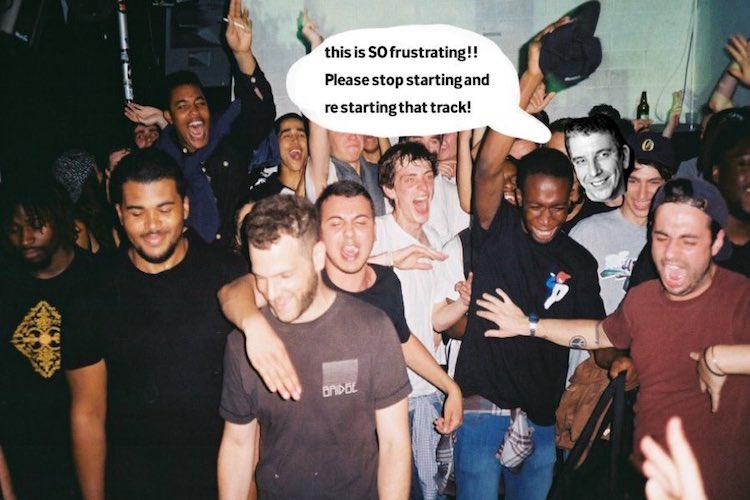
Regardless of where you stand on the grime debate, there’s no denying the recent influx of middle class white boys desperately sporting Adidas tracksuits and saying “peak” in the wrong context. Grime is now a murky grey colour. The pockets of artists are filling from the money of people who can’t name a single member of BBK aside from Skepta and JME. Music journalism in itself is a murky area, as listeners will always interpret music differently and conclusions on quality will almost always spark discontent on some area of the spectrum. With half-arsed album reviews published a matter of hours after the album has been released, the relationship between fans and journalists is in bad condition.
Jesse Bernard, an accomplished music journalist who has written for the likes of FACT, Complex and the Guardian, has hammered the point home that those within the culture should be writing about the culture. “I’d love it if blogs did a lot more when it comes to commissioning black writers when it comes to hip-hop/ rap. Grime included. It’s not even that hard nowadays, decent writers aren’t hard to come by and they’re on people’s radars. I’m not saying white folks can’t write about the culture, of course they can but there’s something about authenticity here.” When the conversations about blackness in grime was at its peak, namely after Joseph Adenuga (Skepta)’s response to Chanté Joseph’s article “Should we be relieved that grime has gained recognition at the Mercury prize nominations?”, grime’s relationship with class and racial background was scrutinised. It became clear that there was a lack of journalistic integrity – that is, those writing and documenting the culture weren’t a part of it. This led to disingenuous conversation that fizzled out when one side became tired of recounting facts about historical influence and the other side grew tired of flailing their arms in the air and claiming reverse racism. Out of touch music journalists are lethal to the culture upon which they base their think pieces. Writing about a culture that you work completely outside of is as disingenuous as a member of the Stasi documenting East German youth counter-culture.
— Julie Adenuga (@JulieAdenuga) December 6, 2016
We have seen this take place over and over again; the ugly monster rearing its head. As recently as 6 December, ignorant music journalists struck again. John Aizlewood described Skepta’s concert of re-loads as “frustratingly… songs were restarted and…the audience sloped home unsatisfied.” Not only does it show how little he knows about the culture of grime, but it also shows his audacity in speaking about it despite his lack of knowledge. A failure on behalf of the Evening Standard from the music editor to the writer, the paper received a backlash of criticism. A half-hearted apology “for an error in the original version of this review… the author acknowledges it should have read ‘reload’ rather than ‘restart’ and shouldn’t have suggested technical malfunction.”
Can’t stop laughing that that Evening Standard Skepta review. “Unfortunately songs were restarted…” FAM DO YOU KNOW WHAT A RELOAD IS?
— Carl Anka (@Ankaman616) December 6, 2016
Strike number two, Tom Horan in the Guardian labels Loyle Carner as “the sentimental face of grime”. To describe Loyle Carner as grime is delusional. It’s so far-removed and ignorant that there’s little sympathy to be felt or expressed. Grime isn’t simply a black British man in a tracksuit, nor should it be simplified as this. Anyone with even the slightest interest in grime could have figured that out. Even at its most simple and mechanic form of 140 BPM and faster, Horan doesn’t get it. Unfortunately, Horan doesn’t leave it there. “For all its success this year,” he writes, “many people dislike grime: the menace, the quasi-criminality, the endless geezers.”
Yo @guardian, just seen that you’ve called me the sentimental face of grime. Could you guys be any more wrong/out of touch?
— Loyle (@LoyleCarner) October 9, 2016
Menace? Quasi-criminality? Geezers? There’s no doubt that grime artists speak about crime and the tone is deliberately aggressive, but the usage of “geezer” limits grime to a stereotypical image of an older Cockney, East London male. Horan’s desperate attempts to warp grime into a mild, likeable, amicable genre that the middle classes can enjoy without feeling guilty is an exact continuation of the damage of out-of-touch music journalists.
Translating the “exotic” context of grime to its appropriate, stiff-upper-lip upper-middle-class new fans is the wrong route to take. New fans should fit themselves into the culture that they have newfound interest in. Horan then brings into question the perception of grime. “Brit-hop’s most combative genre,” waffles Horan, as if rock, punk and screamo music do not exist. These genres are much older than the early-00s-origin of grime and yet it is grime that is more associated with riot culture, aggression, violence and crime.
Grime has been labelled for years as romanticising violence and encouraging gun crime. As Skepta said “If I’m talking about a gun or I’m talking about weed, this is my experience, this is my lifestyle. You put me in this system, you put me down there, you put my parents down there…so I had no choice but to grow up around these things.” Yet another issue with journalists making such assertions is that they don’t talk about the flavour of tea which allows the violence and “quasi-criminality” to brew: the historic, political and economic pressures forced upon black British communities that create their experiences, and the genre these communities use to curate those experiences. Crime happens as a result of the situations that people are put in, and denying this fact is untruthful.
These are just a few examples of how peak the situation really is with out-of-touch music journalism and why those working at the forefront of a culture should be writing on the culture to form the type of representation that is truly needed.









